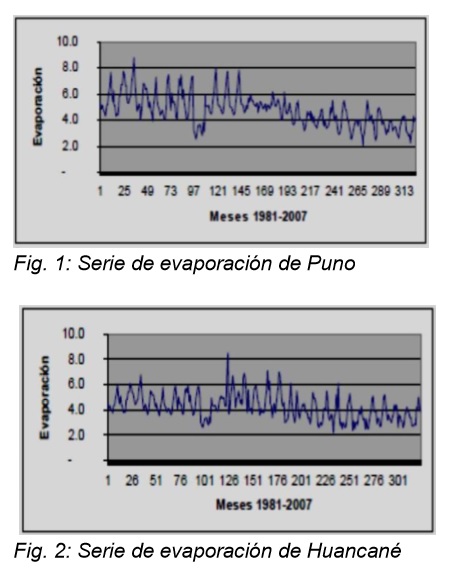Análisis de la evapotranspiración potencial en función de elementos climáticos en la zona circunlacustre de la cuenca del Titicaca Peruano
DOI:
https://doi.org/10.33017/RevECIPeru2012.0020/Keywords:
Evapotranspiration, coefficient, meteorology, parameters, basin, circunlacustre.Abstract
In the area circunlacustre of the Titicaca’s basin, we realized the analysis of potential evapotranspiration based on climatic elements, It had the objectives to: Determining a regional equation of potential evapotranspiration (Evp) with tank evaporation method, calculating the value of tank evaporation coefficient (K), to estimate whit more accurately, easily and at lower cost water demand of crops of economic importance to the area, avoiding excesses and deficiencies in the implementation of water irrigation, estimated by other methods less accurate, and the description of the behavior of potential evapotranspiration that area, for this purpose we used information from the meteorological stations of Puno, Huancané, Juli and Desaguadero. To this end took the monthly averages of the following climatic elements: Maximum temperature, minimum
temperature, relative humidity, wind speed, hours of sun and evaporation of the years 1981 to 2007. The potential evapotranspiration was determined by the method of Penman Monteith update, which is more accurate [2], which was compared with evaporation and subsequently determined K, for each season, month and year in question. Of the previous analysis we will say, that, for each station K, it is the average of the values of Ks of the periods indicated previously, corresponding for Puno 0.78, for Huancané 0.85, for Juli 0.79 and for Desaguadero 0.79. Therefore in the circunlacustre zone, K is 0.80, this value is within the ranges established K ranging from 0.40 to 0.85 [2], then the regional equation describing the Evp of the circunlacustre zone is Evp = 0.80 * Ev. The estimated values of Evp of each weather station were compared and plotted, finding that there is very similar behavior in seasons of the year, correlating with the behavior of plants native to that zone with respect to the vegetative period and to the consumption of water, indicating that evapotranspiration calculation is consistent with the reality. The Evapotranspiration values in the circunlacustre zone are 3.55, 2.92, 3.16 and 4.11 mm / day in summer, fall, winter and spring respectively.


